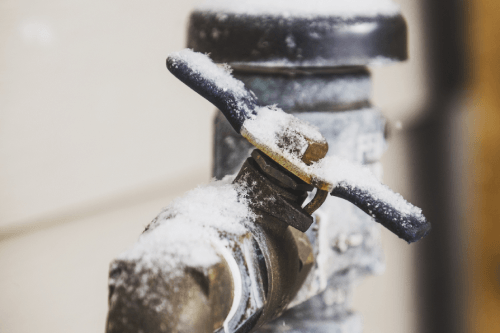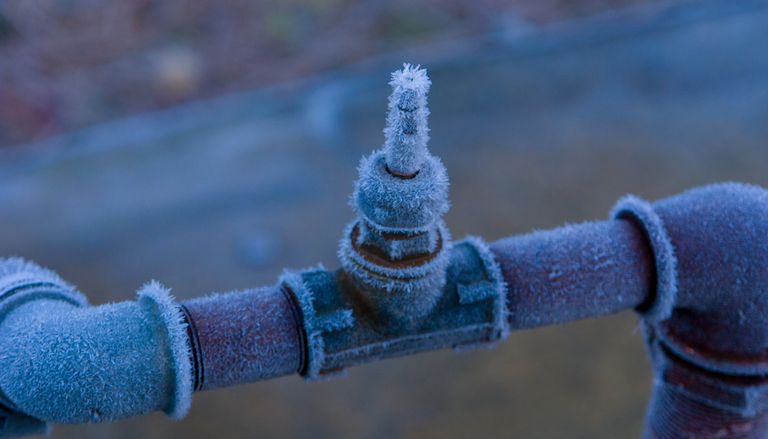Crucial Advice to Avoid Frozen Pipes in Winter
Crucial Advice to Avoid Frozen Pipes in Winter
Blog Article
What're your thoughts on How to Prevent Your Pipes From Freezing?

Winter can wreak havoc on your plumbing, especially by freezing pipes. Below's exactly how to prevent it from taking place and what to do if it does.
Intro
As temperatures decline, the danger of icy pipes increases, possibly bring about costly repair services and water damages. Understanding exactly how to avoid icy pipelines is essential for house owners in cool environments.
Avoidance Tips
Insulating susceptible pipes
Wrap pipes in insulation sleeves or utilize warm tape to secure them from freezing temperature levels. Concentrate on pipelines in unheated or outside areas of the home.
Heating techniques
Keep interior spaces effectively heated, particularly locations with plumbing. Open up closet doors to enable cozy air to distribute around pipelines under sinks.
How to identify icy pipelines
Search for lowered water flow from faucets, uncommon smells or sounds from pipes, and visible frost on subjected pipelines.
Long-Term Solutions
Architectural changes
Consider rerouting pipes away from exterior walls or unheated areas. Add additional insulation to attics, basements, and crawl spaces.
Upgrading insulation
Invest in premium insulation for pipes, attics, and walls. Proper insulation aids keep regular temperature levels and minimizes the risk of frozen pipelines.
Securing Outside Plumbing
Yard pipes and outdoor taps
Detach and drain yard hose pipes prior to winter. Set up frost-proof faucets or cover outdoor faucets with protected caps.
Recognizing Icy Pipelines
What creates pipelines to ice up?
Pipelines ice up when revealed to temperature levels listed below 32 ° F (0 ° C) for expanded durations. As water inside the pipelines ices up, it broadens, putting pressure on the pipe walls and potentially causing them to break.
Threats and problems
Frozen pipes can lead to water supply disturbances, property damages, and costly fixings. Burst pipelines can flooding homes and cause substantial architectural damage.
Signs of Frozen Piping
Determining frozen pipes early can prevent them from bursting.
What to Do If Your Pipes Freeze
Immediate activities to take
If you believe icy pipelines, maintain faucets open to ease pressure as the ice thaws. Utilize a hairdryer or towels soaked in hot water to thaw pipelines slowly.
Conclusion
Protecting against icy pipes calls for positive measures and fast responses. By recognizing the causes, indicators, and preventive measures, homeowners can secure their plumbing during winter.
6 Proven Ways to Prevent Frozen Pipes and Protect Your Home
Disconnect and Drain Garden Hoses
Before winter arrives, start by disconnecting your garden hoses and draining any remaining water. Close the shut-off valves that supply outdoor hose bibs and leave the outdoor faucet open to allow any residual water to drain. For extra protection, consider using faucet covers throughout the colder months. It’s also important to drain water from any sprinkler supply lines following the manufacturer’s directions.
Insulate Exposed Pipes
Insulating your pipes is an effective way to prevent freezing. Pipe insulation is readily available at home improvement stores and is relatively inexpensive. Pay close attention to pipes in unheated areas such as the attic, basement, crawl spaces, or garage. Apply foam insulation generously to create a buffer against the cold. You can also wrap your pipes in heat tape or thermostat-controlled heat cables for added warmth.
Seal Air Leaks
Inspect your home for any cracks or openings that could let in cold air. Seal any holes around the piping in interior or exterior walls, as well as the sill plates where your home rests on its foundation. Additionally, make sure to keep your garage door closed unless you’re entering or exiting. Leaving it open creates a significant air leak that can lead to frozen pipes.
Allow Warm Air Circulation
During cold snaps, it’s essential to allow warm air to circulate evenly throughout your home. Leave interior doors ajar to promote better airflow. Open kitchen and bathroom cabinets to help distribute heat consistently around the rooms. If you have small children or pets, be sure to remove any household chemicals or potentially harmful cleaners from open cabinets for safety.
Let Faucets Drip
A small trickle of water can make a big difference in preventing ice formation inside your pipes. When temperatures drop significantly, start a drip of water from all faucets served by exposed pipes. This continuous flow helps prevent the water from freezing. Additionally, running a few faucets slightly can relieve pressure inside the pipes, reducing the chances of a rupture if the water inside does freeze.
https://choateshvac.com/6-proven-ways-to-prevent-frozen-pipes-and-protect-your-home/

I am just very enthusiastic about How to Prevent Your Pipes From Freezing and I hope you enjoyed the entire article. Please take a moment to promote this write-up if you liked it. Thanks so much for your time spent reading it.
Book Inspection Report this page